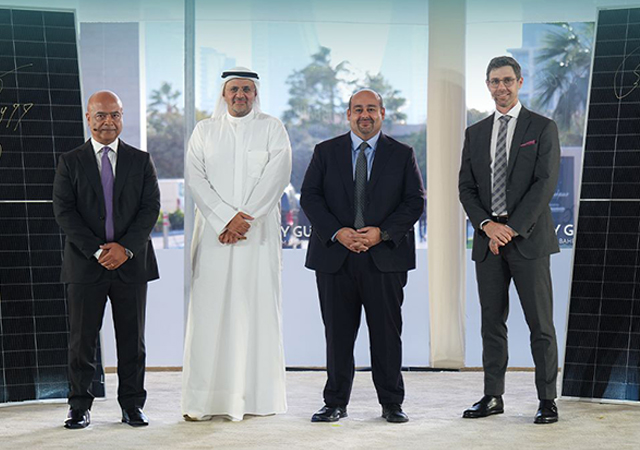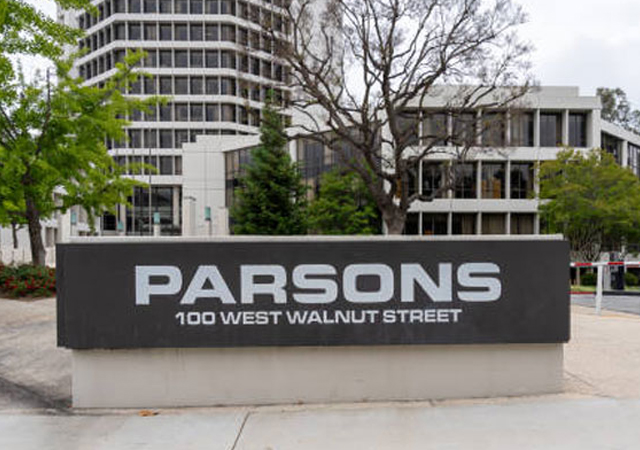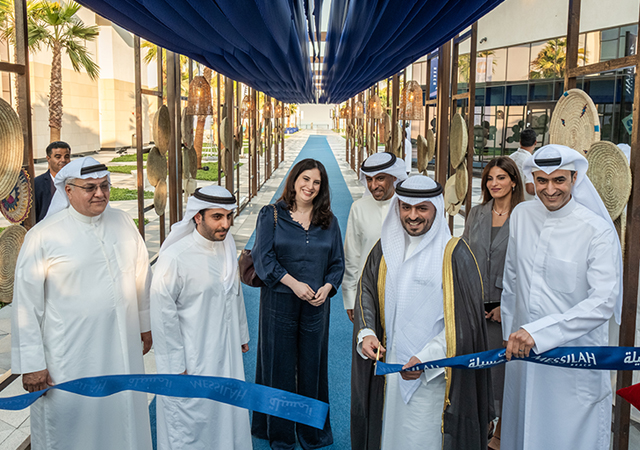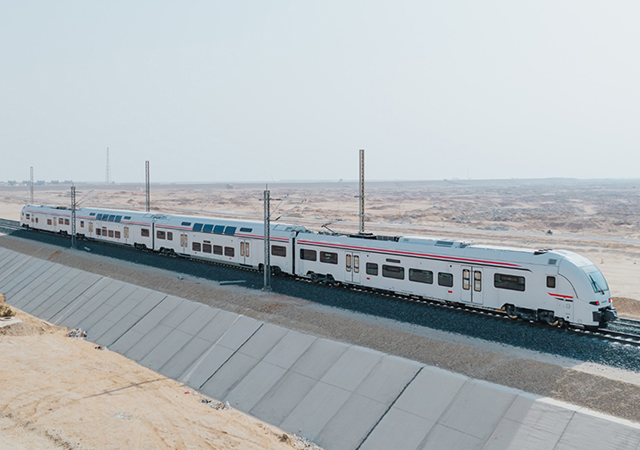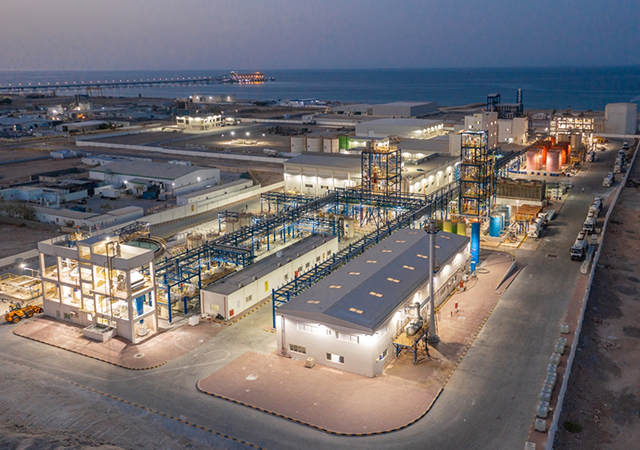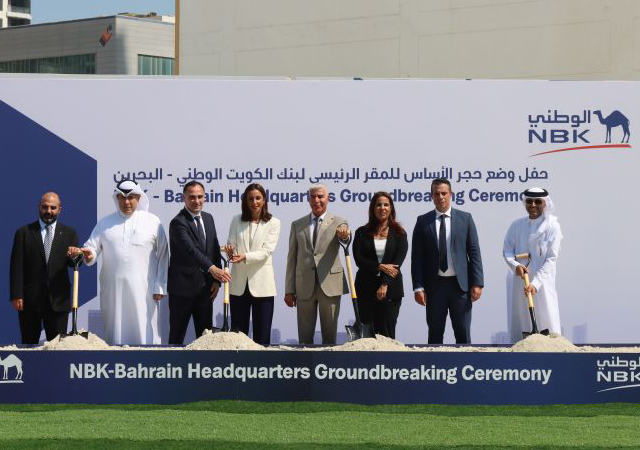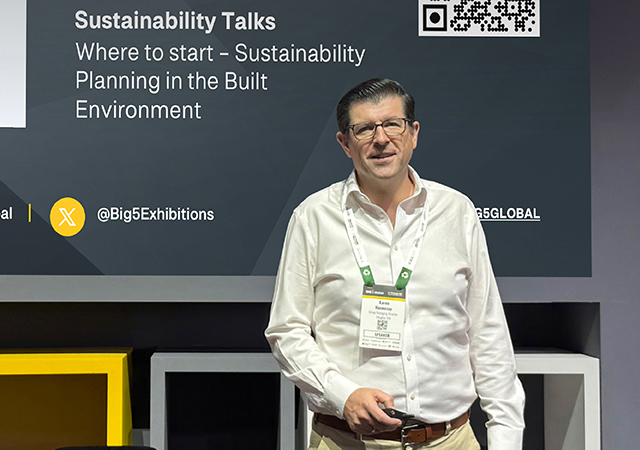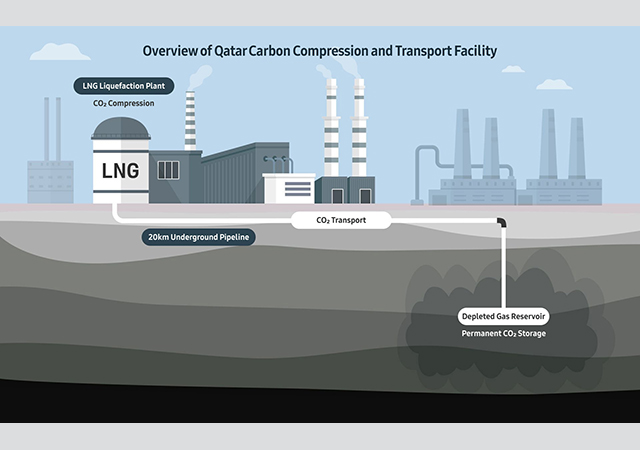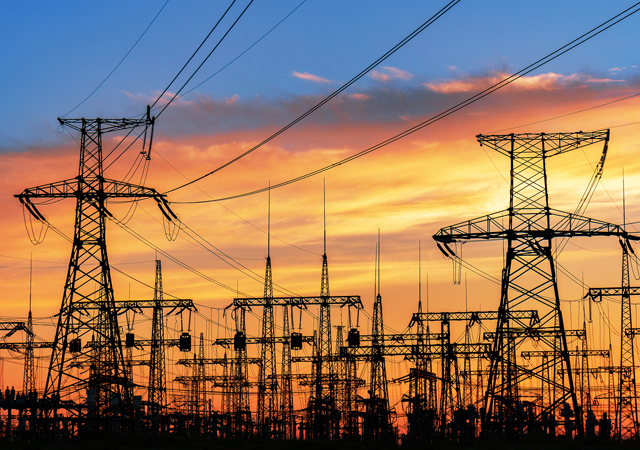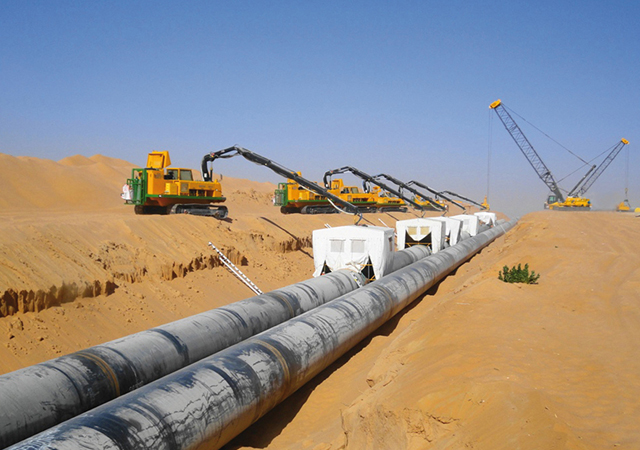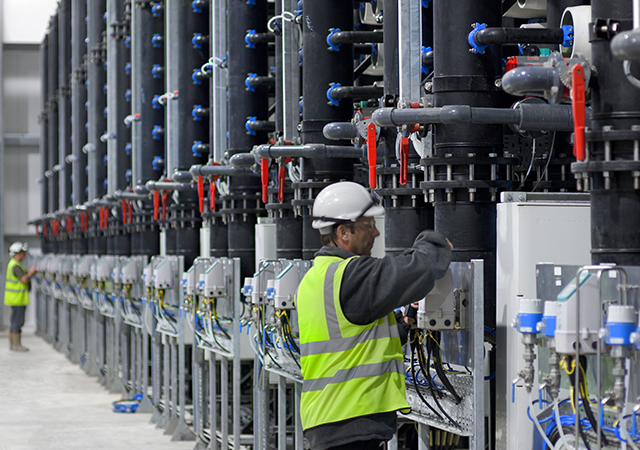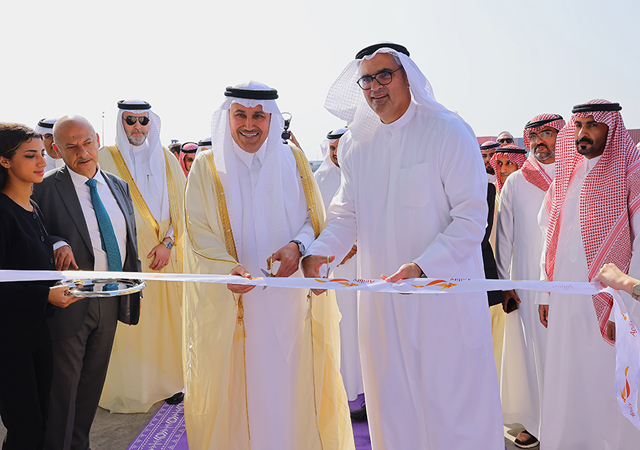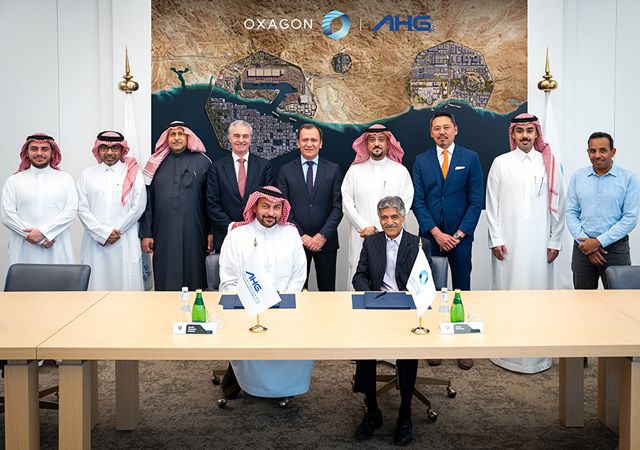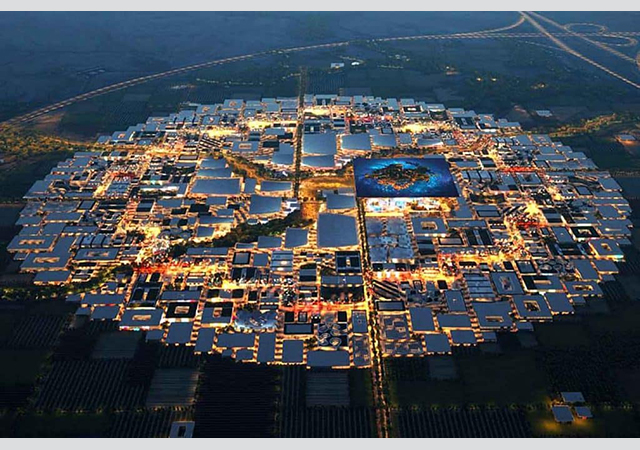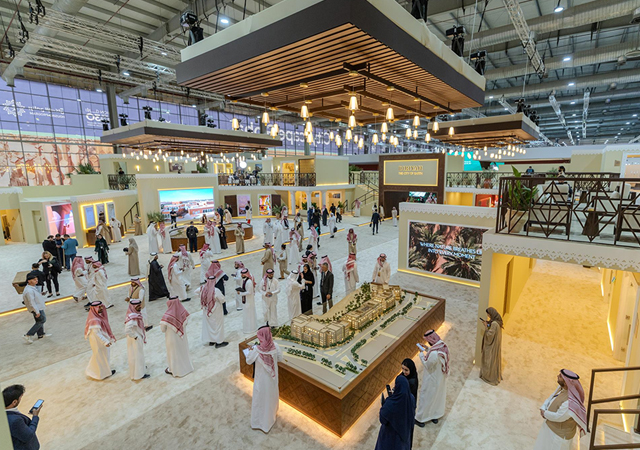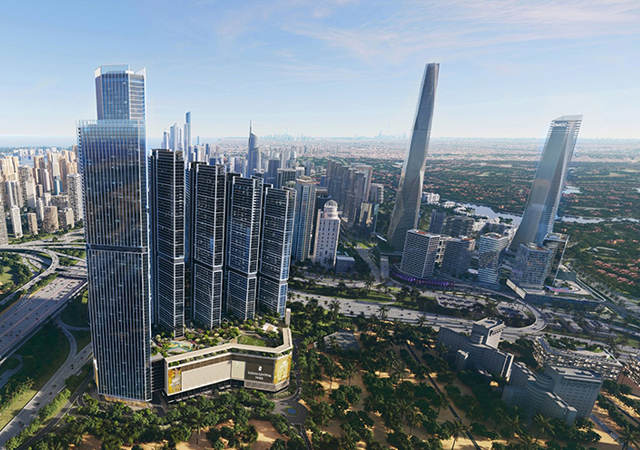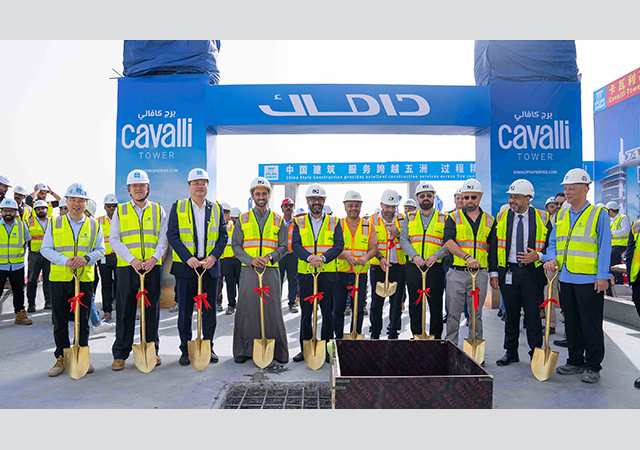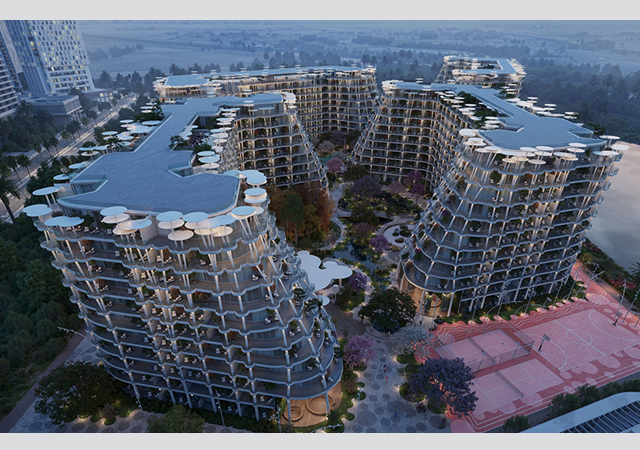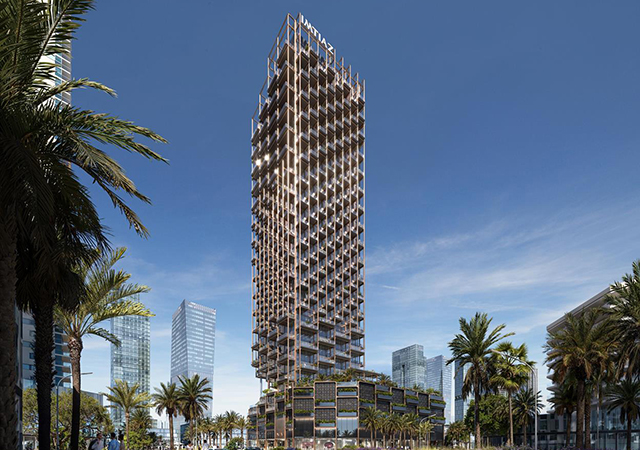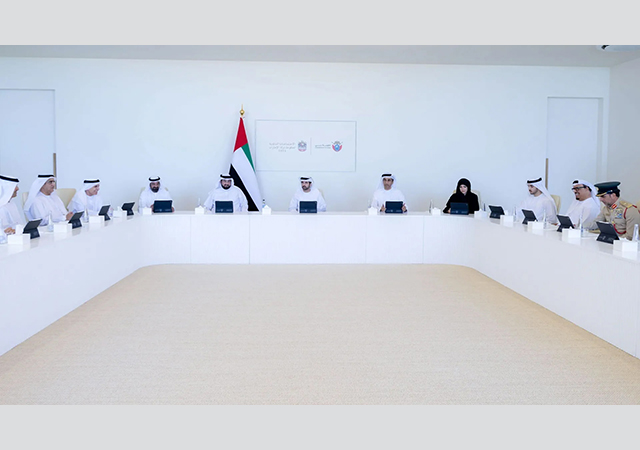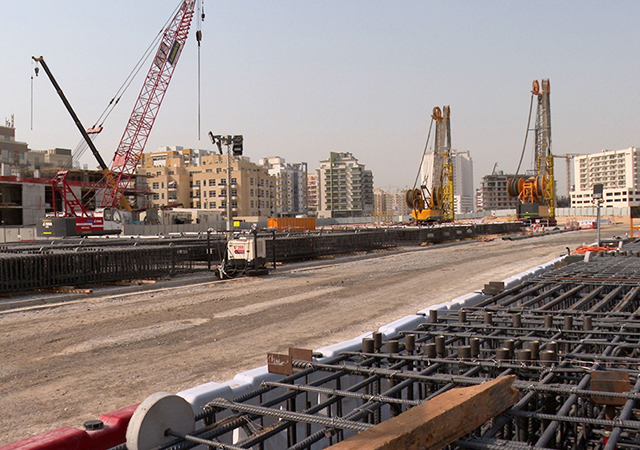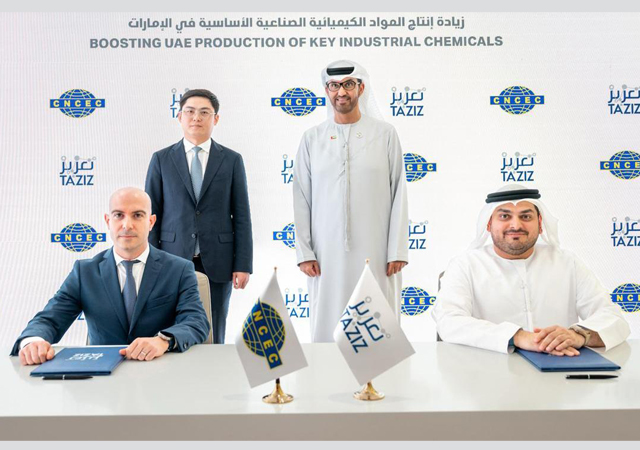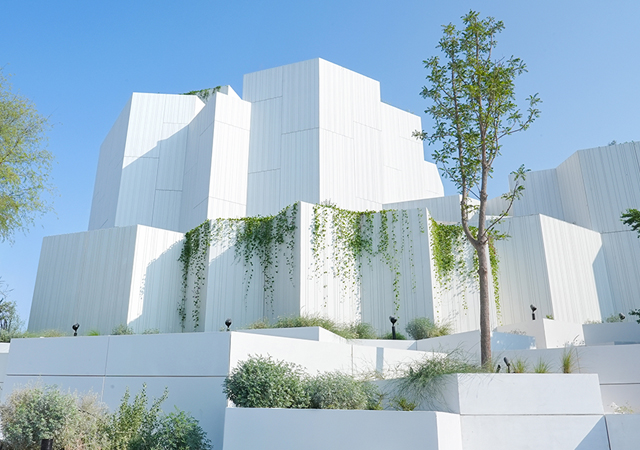
 The prill tower at Qatar’s fertiliser plant.
The prill tower at Qatar’s fertiliser plant.
There are a number of situations where it may become necessary to increase the load-carrying capacity of a structure in service.
These include change of loading or use and also the cases of structures that have been damaged.
Since the early 1990s, fibre composite materials externally bonded to the concrete surface have been increasingly used in preference to more traditional techniques, such as casting additional reinforced concrete or the use of steel plate bonding.
Available in various forms, FRPs may be fabricated in the factory and bonded to the concrete surface or formed in situ. They offer a range of properties, depending on the type and amount of fibre used.
A major advantage of using fibre composites is the ease of installation, which is much simpler and quicker than other strengthening techniques, making the approach very cost effective. One limitation may be the level of strengthening (that is, the maximum increase in load capacity) that can be achieved. Strengthening against one mode of failure (for example, bending) may lead to another mode (shear) and must be considered in the design process. In addition, account must be taken of the risks associated with any possible damage to the strengthening.
An appreciable number of structures around the world have been strengthened using FRP and the rate at which the technique is being used is increasing rapidly. In the UK, Concrete Society Technical Report 55(1), which was originally published in 2000, is accepted as the standard guidance document. The report is also widely used around the world, in countries such as Australia, New Zealand and Singapore. The guidance in the report is not specific to any particular type of fibre-reinforced polymer material or any particular strengthening technique. The American Concrete Institute guide ACI 440.2R(2) gives similar guidance. Concrete Society Technical Report 57(3) gives guidance on the important aspects of workmanship and quality control.
Materials
Currently, the most suitable fibres are glass, carbon or aramid (better known by the trade names Kevlar and Twaron.) Each is a family of fibre types and not a particular one. Typical values for the properties of the materials are given in Table 1. It should be noted that these values are for the fibres alone, not for the fibre composite, which will have significantly lower properties. They should only be taken as indicative; where necessary, actual values should be obtained from the particular manufacturer. The fibres all have a linear elastic response up to ultimate load, with no significant yielding.
The selection of the appropriate type of fibre to be used in a particular application will depend on many factors, including the type of structure, the likely loading and the environmental conditions.
The fibres may be provided in the form of fabrics, either unidirectional on a removable backing sheet or as woven rovings, or else in the form of composite plates or shells as described below. The properties of the fabric materials will depend on the amount, type and arrangement of fibres. The kinking of the fibres in a woven material will significantly reduce the strength. The thickness of the material may be as low as 0.1 mm and it will be available in widths of perhaps 500 mm.
Composite plates are usually formed by the pultrusion process, which enables a high proportion of fibres (generally in the region of 65 per cent) to be incorporated into the cross-section. Generally, the plate materials are in the region of 1 to 2 mm thick and are supplied in a variety of widths, say between 50 and 100 mm. Long lengths of material are available, with thinner material being provided in the form of a coil. The effective mechanical properties will depend on the percentage of fibres in the cross-section. Thus, for a typical composite plate, the properties will be about 65 per cent of those given in Table 1.
The adhesives most commonly used are epoxies, since the highly alkaline nature of the concrete, makes polyurethane-based adhesives unsuitable. The formulation of the adhesive will depend on the particular application and the nature of the working environment, particularly the relative humidity and the temperature.
Preformed shells have been used to strengthen circular columns on a number of structures in North America; recently, shells were used to strengthen 24 columns on a major bridge in the North of England. Generally, the internal diameter of the shell is close to that of the external diameter of the column, thereby keeping the increase in the overall diameter to a minimum. Preformed straps have been used to increase the shear capacity of one bridge in the UK.
Advantages of FRP
FRP materials have higher ultimate strengths and lower density than steel. When taken together, these two properties result in fibre composites having an advantage over steel plate in terms of strength/weight of up to 30 in some cases (though, in many applications, it may not be possible to utilise the full strength). In addition, FRP materials are available in very long lengths while steel plate is generally limited to 6 m. The reduced weight makes handling and installation significantly easier – particularly important when working in cramped locations. In many cases, work on slab soffits can be carried out from man-access platforms rather than full scaffolding. Only a limited amount of surface preparation is required and, unlike steel plate, there is no requirement to drill into the structure to fix bolts or other mechanical anchors.
The speed and ease of installation is particularly important for bridges because of the high costs of lane closures and possession times on major highways and railway lines. An additional advantage of FRPs over some other types of strengthening is that the weight of the structure and the dimensions of the member are not significantly increased. The latter may be particularly important for bridges and other structures with limited headroom and for tunnels.
The main disadvantage of all external strengthening of structures by any FRP material would appear to be the risk of fire, vandalism or accidental damage unless the strengthening is protected. One particular concern for bridges over roads is the risk of soffit reinforcement being hit by over-height vehicles. However, strengthening using plates is generally provided to accommodate additional live load and the capability of the unstrengthened structure to carry its own self-weight is unimpaired. Hence, damage to the plate-strengthening material only reduces the overall factor of safety and is unlikely to lead to collapse.
Disadvantages
One perceived disadvantage of using FRP for strengthening is the relatively high cost of the materials. However, costs must be considered on the basis of the cost of the complete strengthening exercise: some examples of the economics of using FRP are given later. An additional disadvantage in the eyes of many clients will be the lack of experience of the techniques and suitably qualified staff to carry out the work.
Economics
The relative economics of the use of fibre composites and other strengthening systems depend on the particular circumstances being considered. Many factors are involved; it is necessary to consider cost comparisons both in the short and in the long term. The latter may be difficult to quantify as the lifetime behaviour can only be estimated fairly crudely.
Factors such as the cost of access and possession time should be taken into account as they can have a significant influence. High closure costs are also incurred by highway and railway works. For example, studies carried out for Network Rail in the UK have indicated that strengthening with FRP materials will be approximately 30 per cent cheaper than the equivalent strengthening using steel plate. It has also been reported that the use of FRP for column strengthening on one UK highway bridge halved the cost, as well as shortening the contract duration and significantly reducing the need for lane closures.
In the US, work on upgrading a major highway in New York City had to be carried out at night as there was a requirement for the road to be fully open during the day. The penalty for failure to reopen the carriageway in the morning was $30,000 per hour, with a penalty of $20,000 per day for over-run of the complete project. Strengthening a parking garage in Florida using bonded carbon fibre sheet material was estimated to be 35 per cent cheaper than the conventional method, which would have involved dowelling in additional steel reinforcement and encasing the joint with additional concrete.
In Canada, carbon fibre-reinforced polymer composite sheet material was applied to the soffits and the sides of a bridge in Edmonton, to improve the shear resistance. The FRP solution showed approximately a 30 per cent saving in costs, due chiefly to the fact that the work was carried out below the bridge avoiding the traffic closures that would have been required for a conventional system.
Examples of FRP strengthening
There are many concrete structures around the world that have been externally strengthened with FRP. Carbon fibre plate has been used to strengthen the soffits of slabs and beams in many bridges to increase the load-carrying capacity(4). Installation is straightforward, with only minimum preparation of the concrete surface required. This leads to short possession times, which is very important for structures over busy roads or railways.
Also carbon fibre plates have been applied to the top surfaces of a number of bridges, to improve the hogging capacity of cantilever spans. One problem in this situation is that the asphalt will be laid over the plates, which is a possible cause of damage. Finally for bridge superstructures, preformed carbon fibre straps have been used to improve the shear capacity of beams.
Carbon fibre plates have been used to strengthen slabs and beams in buildings, particularly as part of refurbishment. Because of their flexibility, they can be easily installed behind existing services, such as air conditioning ducts and pipework. They are also very suitable for strengthening around holes cut through slabs, for example, for installing additional services.
Sheet material can be easily wrapped around columns to increase their load capacity. Combinations of sheets in the vertical and hoop directions can be used to increase the axial, flexural and shear capacities. The technique is most suited to columns of circular cross-section as a high level of confinement can be achieved. Wrapping columns with a square or rectangular cross-section will be significantly less effective. Much of the early development work was in Japan and the US to improve the seismic resistance.
A number of industrial buildings have been strengthened with fibre composites, including power station cooling towers(5) and a processing tower for a fertiliser plant in Qatar(6). For the latter, carbon fibre plate was chosen for strengthening, in preference to steel plate or additional concrete, because of the speed of installation.
Workmanship and installation
To ensure good long-term performance, the installation of fibre composite materials must be carried out correctly, and all installations should comply with the requirements of the relevant Health and Safety at Work regulations. In addition, all materials must be used in accordance with the manufacturer’s requirements. It is crucial to the success of the installation that an experienced contractor is appointed.
The contractor should have quality assurance procedures in place and should have a demonstrated proven track record in the installation of composites. The contractor must be able to demonstrate competency and be approved for the application of the system. This approval may be obtained by providing evidence of the manufacturer’s training of the operatives or by documentary evidence of experience on similar projects. The key areas are:
• The selection of the appropriate material and adhesive;
• Adequate preparation of the concrete surface, to remove laitance and irregularities;
• Application of the composite, taking care to ensure a uniform adhesive layer and the exclusion of air bubbles; and
• Correct curing of the adhesive.
More detailed information on the testing that should be undertaken during installation is given in Concrete Society Technical Report 57(3).
In addition, guidance is given on the in-service monitoring and inspection that should be carried out.
It is recommended that all strengthened structures should be inspected visually every year, with more detailed inspections about every six years. The latter should include some testing of the fibre composite.
Summary
Externally bonded FRP is a simple, cost-effective strengthening technique for many different concrete structures, which has been used successfully in many parts of the world. However, workmanship is critical to the success of the technique and all stages of the installation must be carefully controlled.
A maintenance and inspection regime should be set up to check on the long-term performance of the strengthening system.
References
1. Concrete Society, Design guidance for strengthening concrete structures using fibre composite materials, Technical Report 55 (Second Edition), The Concrete Society, Camberley, UK, 2004.
2. American Concrete Institute. ACI 440.2R, Guide for the design and construction of externally bonded FRP systems for strengthening concrete structures, American Concrete Institute, Farmington Hills, 2002.
3. Concrete Society, Strengthening concrete structures using fibre composite materials: acceptance, inspection and monitoring, Technical Report 57, The Concrete Society Camberley, UK, 2003.
4. Sadka B. Strengthening bridges with fibre-reinforced polymers, Concrete, Vol 34, No 2, February 2000, pp 42-43.
5. Anon. Structural reinforcement from MBT FEB, Concrete, Vol.35, No 1, January 2001, pp 12-13.
6. Luke S, Godman S and Hamnevoll H, Strengthening the Qafco prill tower, Qatar, with FRP plates, Concrete, February 2002, pp. 32-33.
* This paper was presented during Gulf Construction Conference Week’s Annual Concrete Technology & Corrosion Protection Conference in Dubai last November.



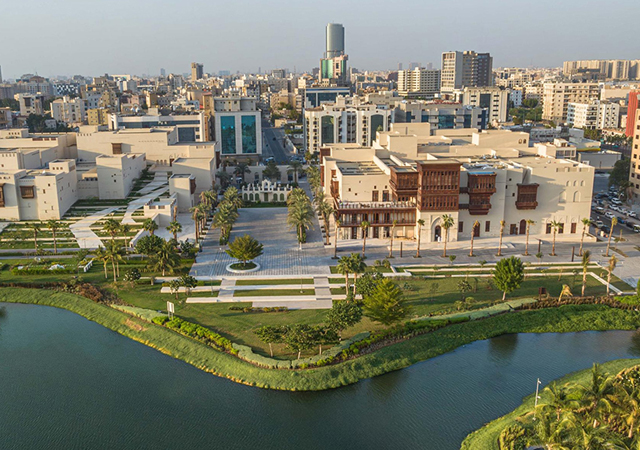
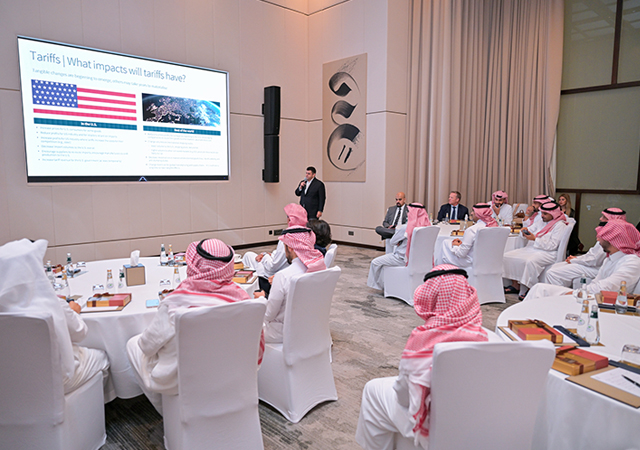
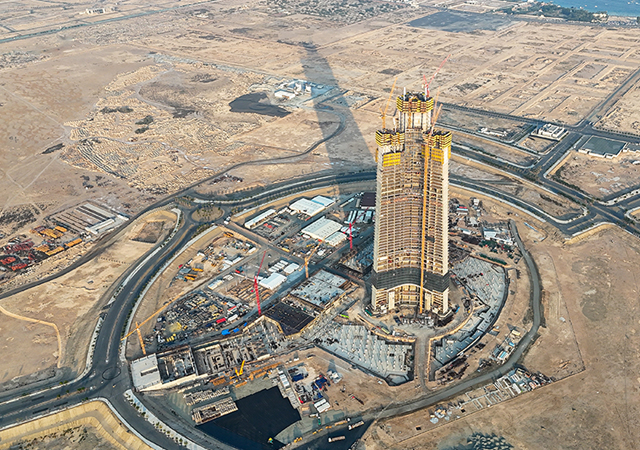
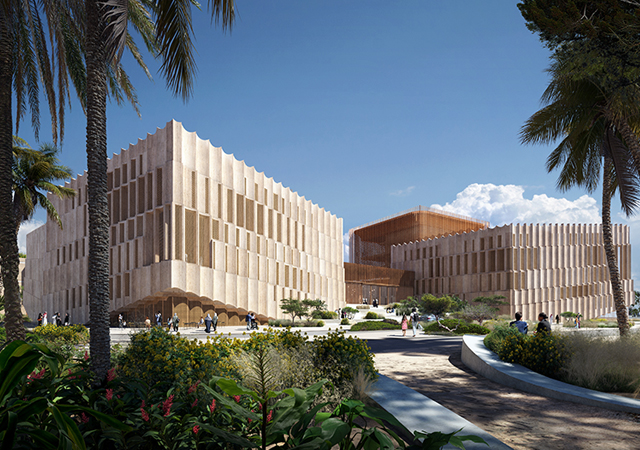

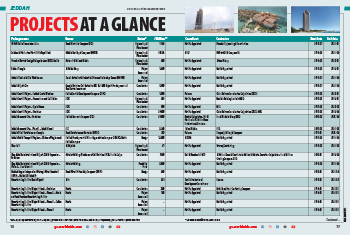
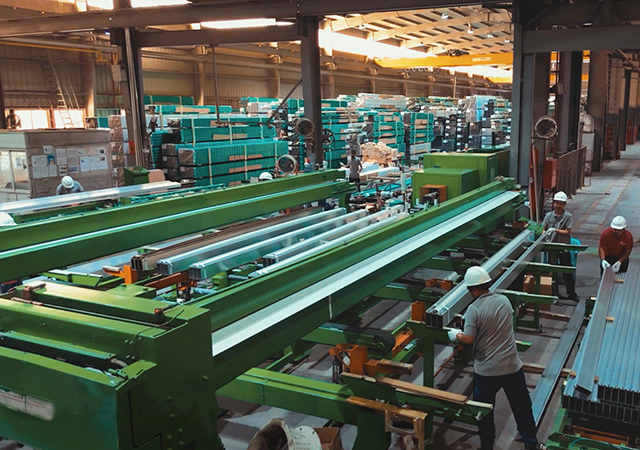

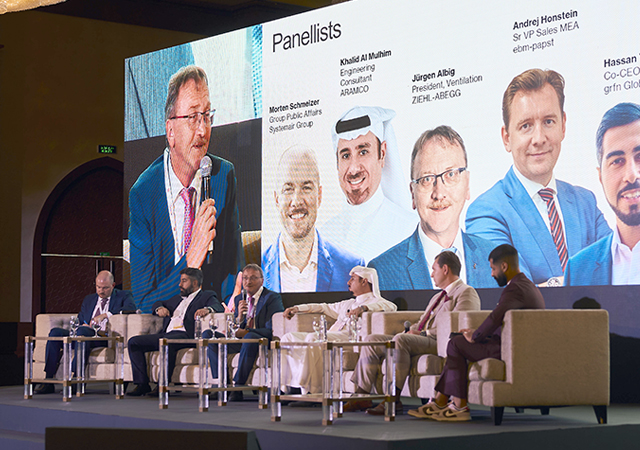
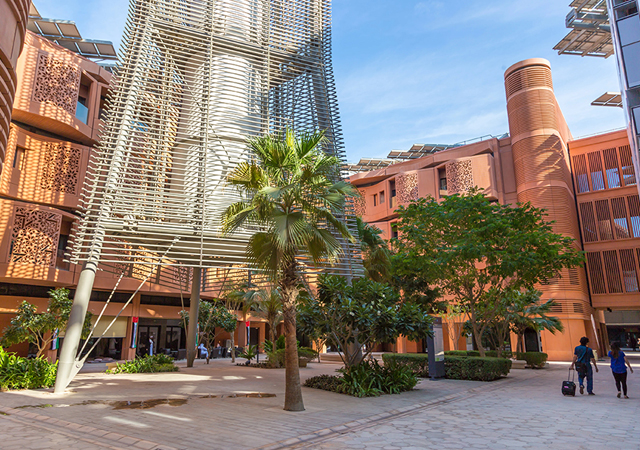

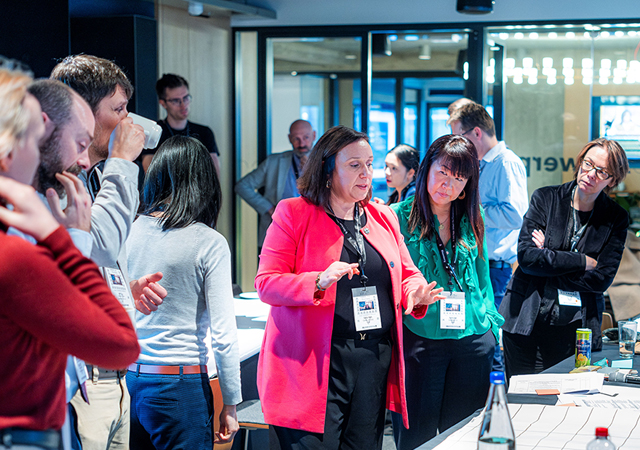
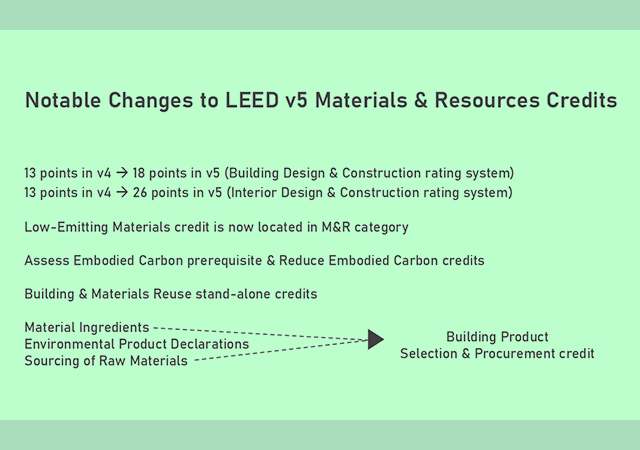
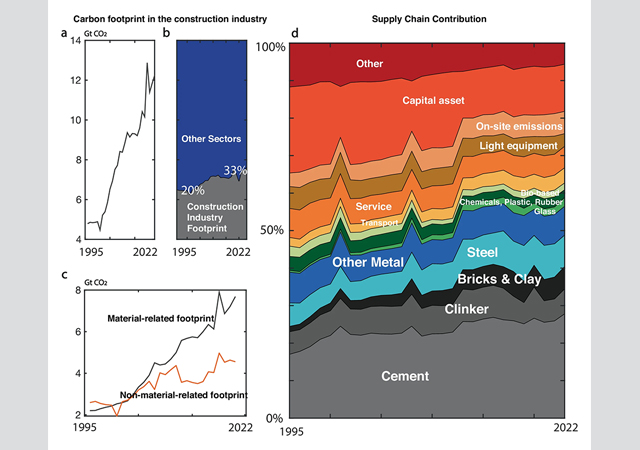
.jpg)

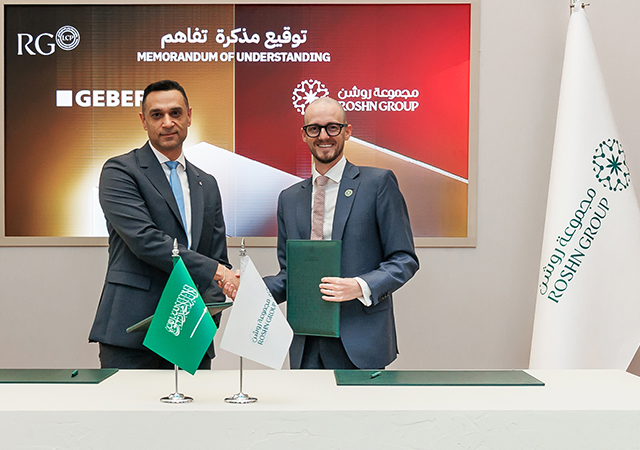
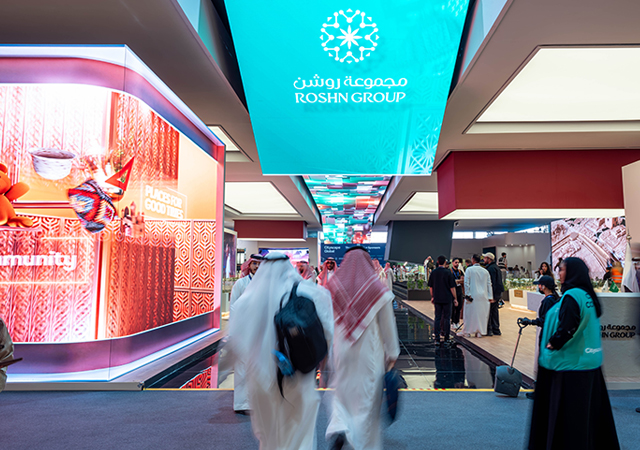

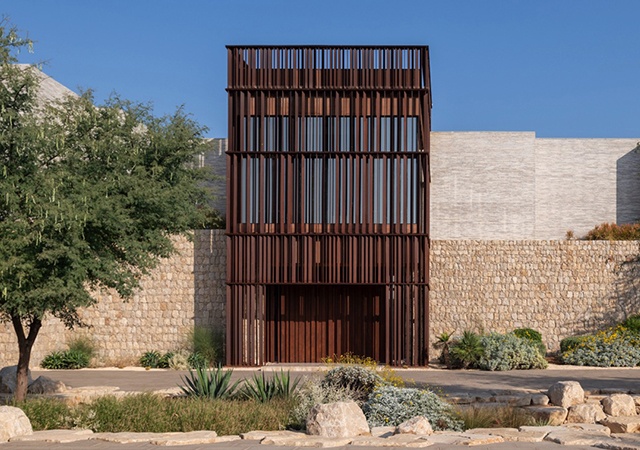
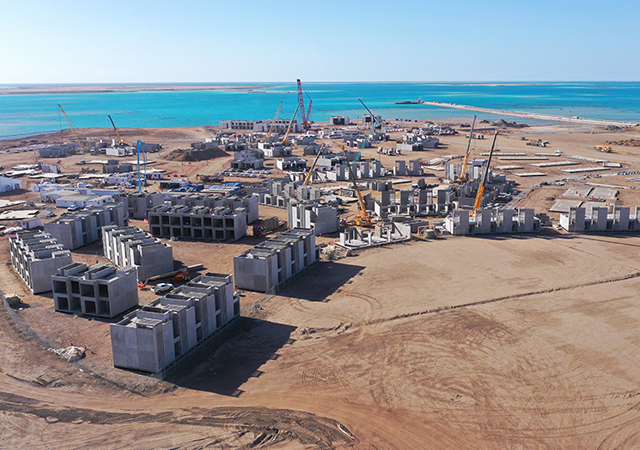


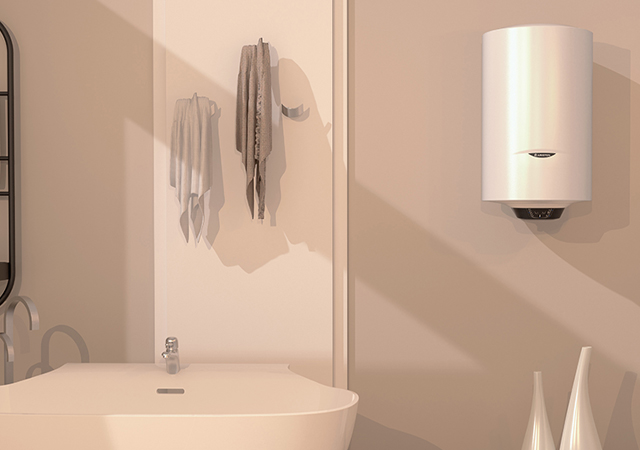
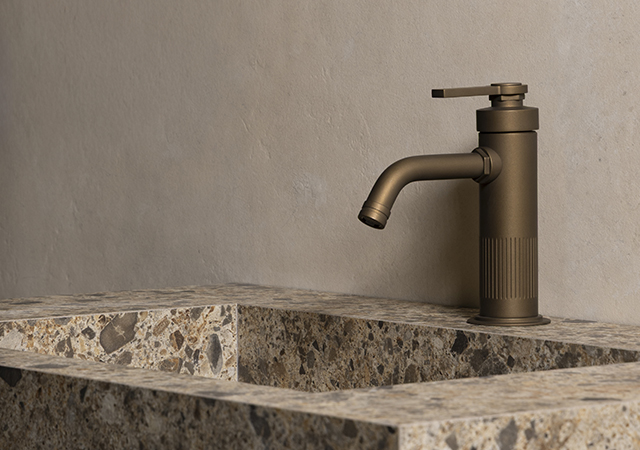


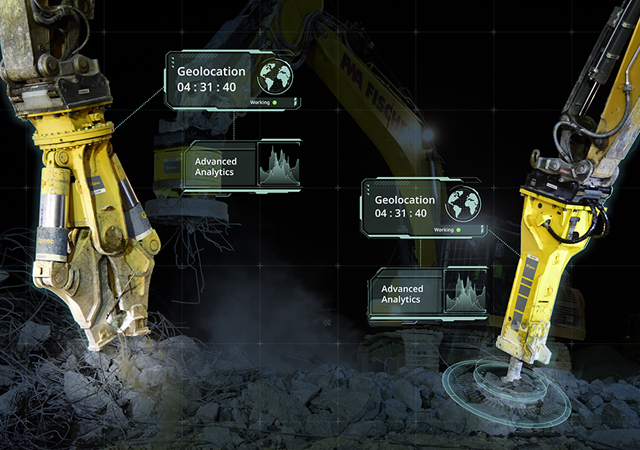
 (1).jpg)

